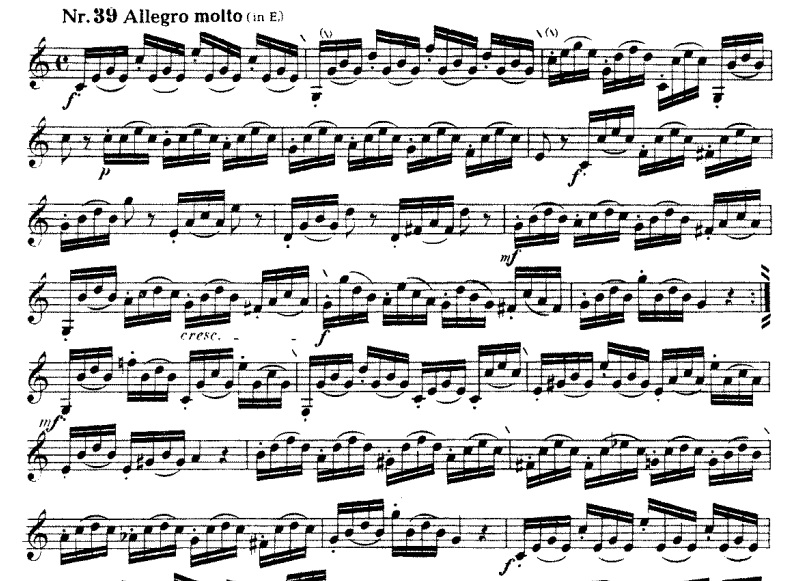This year’s first All-State piece for horn is from one of the most well-known of horn etude books, Kopprasch. While it does look intimidating at first glance – with large jumps and lots of 16th notes, it isn’t quite as complicated as it first appears.
Let’s get started!
Music
Download a copy of this excerpt as a .PDF file or purchase the Kopprasch Book 2 from Amazon.
Key Points:
This is, by far, the more technical of the two etudes for this year. With that in mind, make sure to pay special attention to the technical aspects of the music right from the start. In this piece, playing the right notes, at the right time, and with the right articulation and dynamics is your primary challenge.
With that in mind, here are some things to pay attention to while practicing:
- This piece, like just about all Kopprasch, is full of arpeggios. Although they are not always in the “normal” order (1-3-5 of a scale), there really are only two arpeggios (C and G) for most of the excerpt. Figuring out where the other arpeggios occur (one hint: look for accidentals) will make it much easier to play them correctly.
- The articulation pattern, though potentially awkward, is a window into the structure of the piece. The horn is essentially playing two lines – a melody (the first note of each beat) and the accompaniment (the remaining three notes).
- Notice that, except for the eighth notes, just about every other note in this piece will either be short or slurred. Make sure that you keep this articulation pattern and length consistent from the beginning to the end.
Practice Tips
- Like I mentioned in the above section, there are really two “parts” that the horn is playing here. Spend a little bit of time practicing the two parts separately, so you can get comfortable with the downbeat “melody” (that is usually either an arpeggio or a scale) and the repetitious “accompaniment” that takes place on the remaining three sixteenth-notes of each beat.
- Once you know how the “melody” goes, practice playing those notes as short as possible. If you’re going to play this at the recommended tempo of 80-90 to the quarter, short downbeat notes mean more time to adjust your embouchure, airspeed, and tongue position for the large jumps that occur throughout the piece.
- To help find the shortest “distance” between a large interval (mm. 2 or 10, for example) play these as harmonic series glissandos, adjusting your fingerings as necessary for the second note. Once you can make it from one note to the next accurately and quickly, then add articulation while keeping your air the same.
- While it’s not necessarily indicated in the articulation, making sure to keep the last note of the three-note-slur pattern shorter will also help in maintaining the recommended tempo. Once again – the more space you have between notes, the more time you have to make adjustments for the large interval jumps in this piece.
Listen
Looking for more help? I offer horn lessons both in-person and online! Check out my French horn lessons page for more information!


